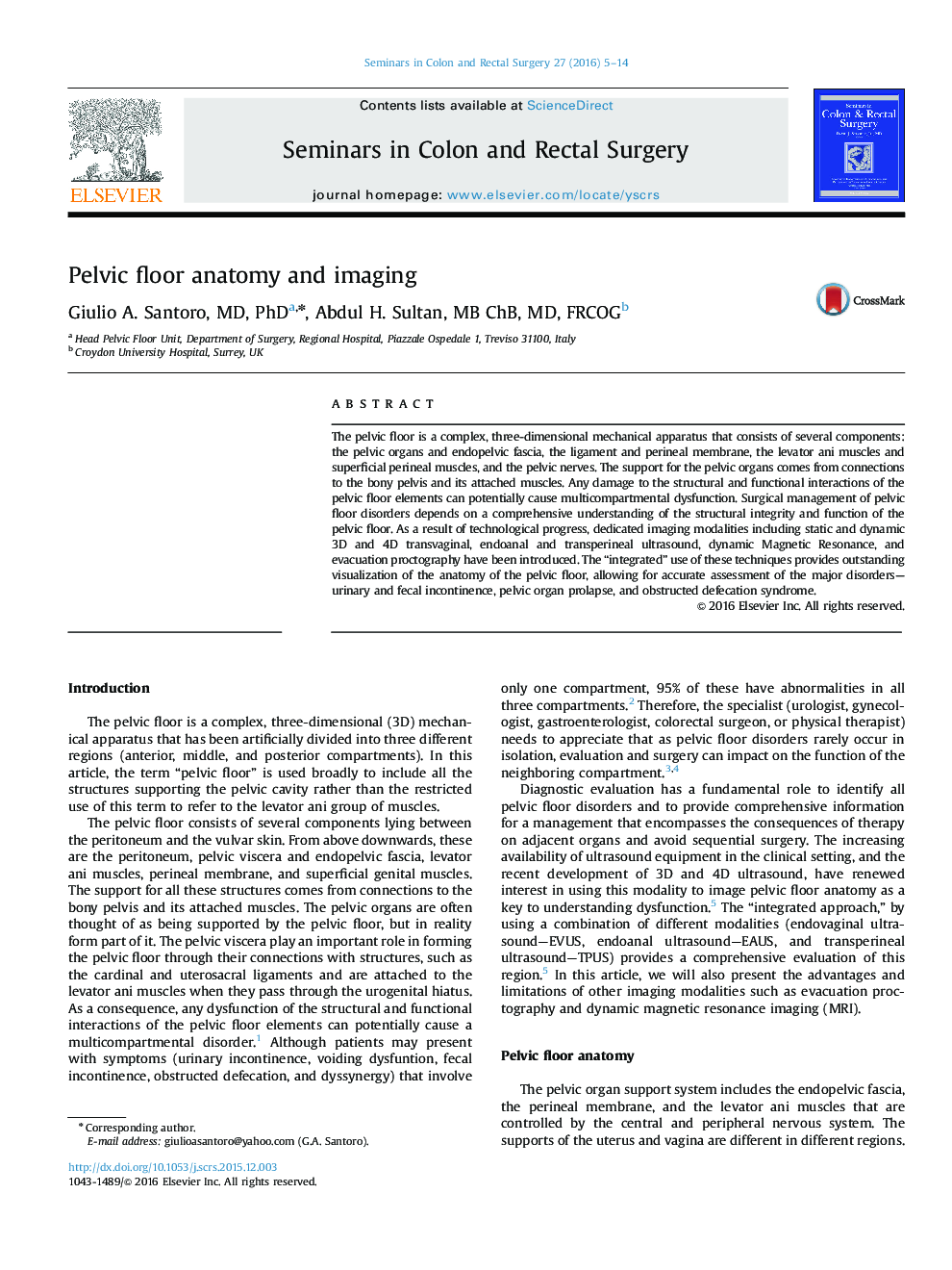| Article ID | Journal | Published Year | Pages | File Type |
|---|---|---|---|---|
| 3319216 | Seminars in Colon and Rectal Surgery | 2016 | 10 Pages |
The pelvic floor is a complex, three-dimensional mechanical apparatus that consists of several components: the pelvic organs and endopelvic fascia, the ligament and perineal membrane, the levator ani muscles and superficial perineal muscles, and the pelvic nerves. The support for the pelvic organs comes from connections to the bony pelvis and its attached muscles. Any damage to the structural and functional interactions of the pelvic floor elements can potentially cause multicompartmental dysfunction. Surgical management of pelvic floor disorders depends on a comprehensive understanding of the structural integrity and function of the pelvic floor. As a result of technological progress, dedicated imaging modalities including static and dynamic 3D and 4D transvaginal, endoanal and transperineal ultrasound, dynamic Magnetic Resonance, and evacuation proctography have been introduced. The “integrated” use of these techniques provides outstanding visualization of the anatomy of the pelvic floor, allowing for accurate assessment of the major disorders—urinary and fecal incontinence, pelvic organ prolapse, and obstructed defecation syndrome.
